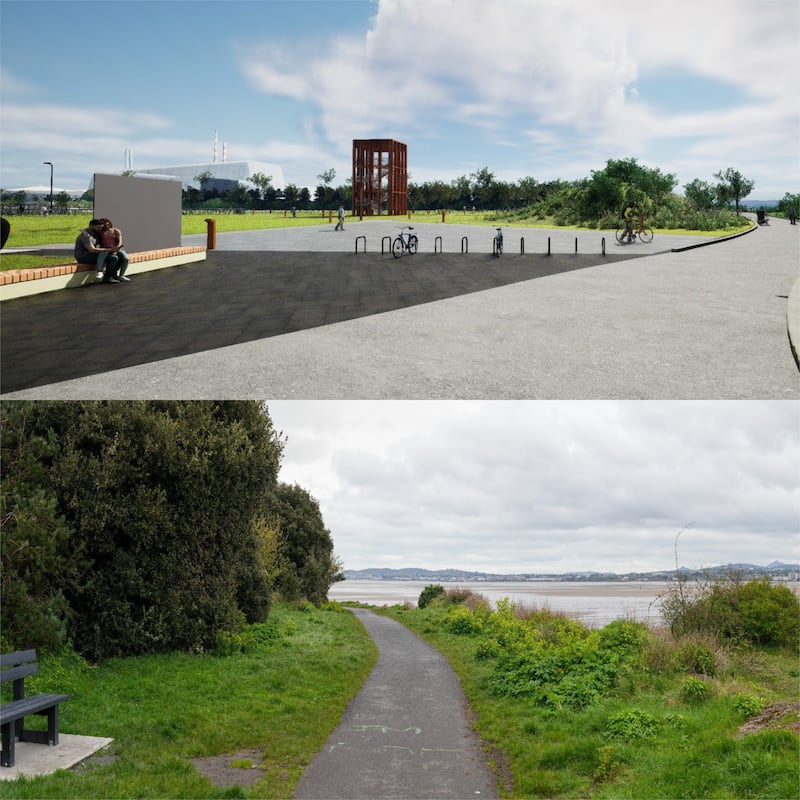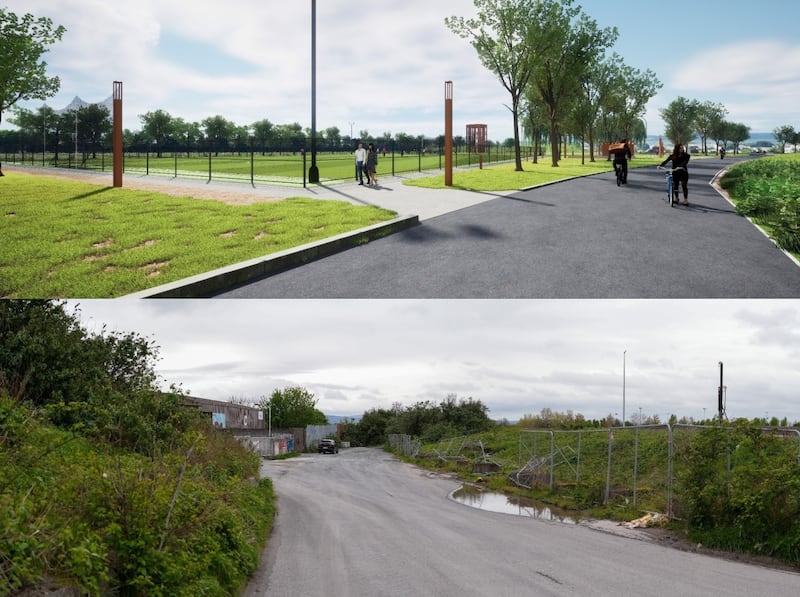Dublin Port Company has abandoned plans to build a multistorey shipping container terminal opposite Sandymount Strand, which was opposed by Minister for Transport Eamon Ryan and Sandymount residents.
The company had planned to locate the new 15-acre terminal, with freight containers stacked three levels high, at the southern boundary of the port between the former glass bottle site, which has been designated for more than 3,500 apartments, and the Irishtown nature reserve.
The proposal, part of the company’s 3FM expansion master plan, was released for public consultation last year and met strident opposition from the local community and Mr Ryan who told the company he had “significant concerns” about the master plan.
The company said it will relocate the “Lo-Lo” (load on, load off) container park further north into the port lands, where it will face only other industrial facilities. This will require containers to be stacked up to six storeys high, instead of three, on the new site, but the company said it will not be visible from Sandymount.
READ MORE

The site opposite Sandymount Strand will be used for an extension of the Irishtown nature park; a site for the district heating system using waste heat from the Poolbeg incinerator, which Mr Ryan said he wanted to see developed by the end of 2025; and a construction compound for the Codling wind farm, Uisce Éireann, and the port company for the next 10 years.
After 10 years, the construction compound area will be used for containers, but only as a “Ro-Ro” (roll on, roll off) facility where containers are brought in by vehicles and not stacked. These containers will be screened from view the port said, by the surrounding nature park.
However, Mr Ryan said that while the amendments to the plan “represent progress” he wants this entire area to be used as an extension to the nature park and not “as a container trailer park” bordered by a nature park. “It would extend the nature reserve in a way that would really benefit the whole city,” he said.
The 3FM project includes the development of a new bridge across the Liffey, linking the north and south ports. The Southern Port Access Route (SPAR), includes a 2km road on the south side of the river as well the bridge to the east of the existing Tom Clarke/Eastlink Bridge which will carry lorries, cyclists and potentially a Luas line.
Discussions are now progressing with Irish Rail “with the intention of providing access for all port terminals to rail” the company said. “The SPAR will enable rapid road shunting of containers from the 3FM Project to these rail intermodal facilities.”

Mr Ryan had been particularly critical of the company’s reliance on road over rail transport saying he did not see how this would contribute to decarbonisation objectives.
He said on Wednesday the discussions with Irish Rail represented a “really significant positive development” which reduced the requirement for expanding Ro-Ro capacity.
“This would allow us to be able to use that whole land for the nature reserve rather than as a trailer park. I will be working with Dublin Port in the coming weeks and months to try to get that agreed and I’m confident we can.”
The Sandymount and Merrion Residents’ Association said while its “preferred position” was also for the full extension of the nature reserve, it was looking forward to reviewing the port company’s revised proposals.
The company is expected to submit a planning application for the project to An Bord Pleanála in July.
- Sign up for push alerts and have the best news, analysis and comment delivered directly to your phone
- Find The Irish Times on WhatsApp and stay up to date
- Listen to our Inside Politics podcast for the best political chat and analysis












